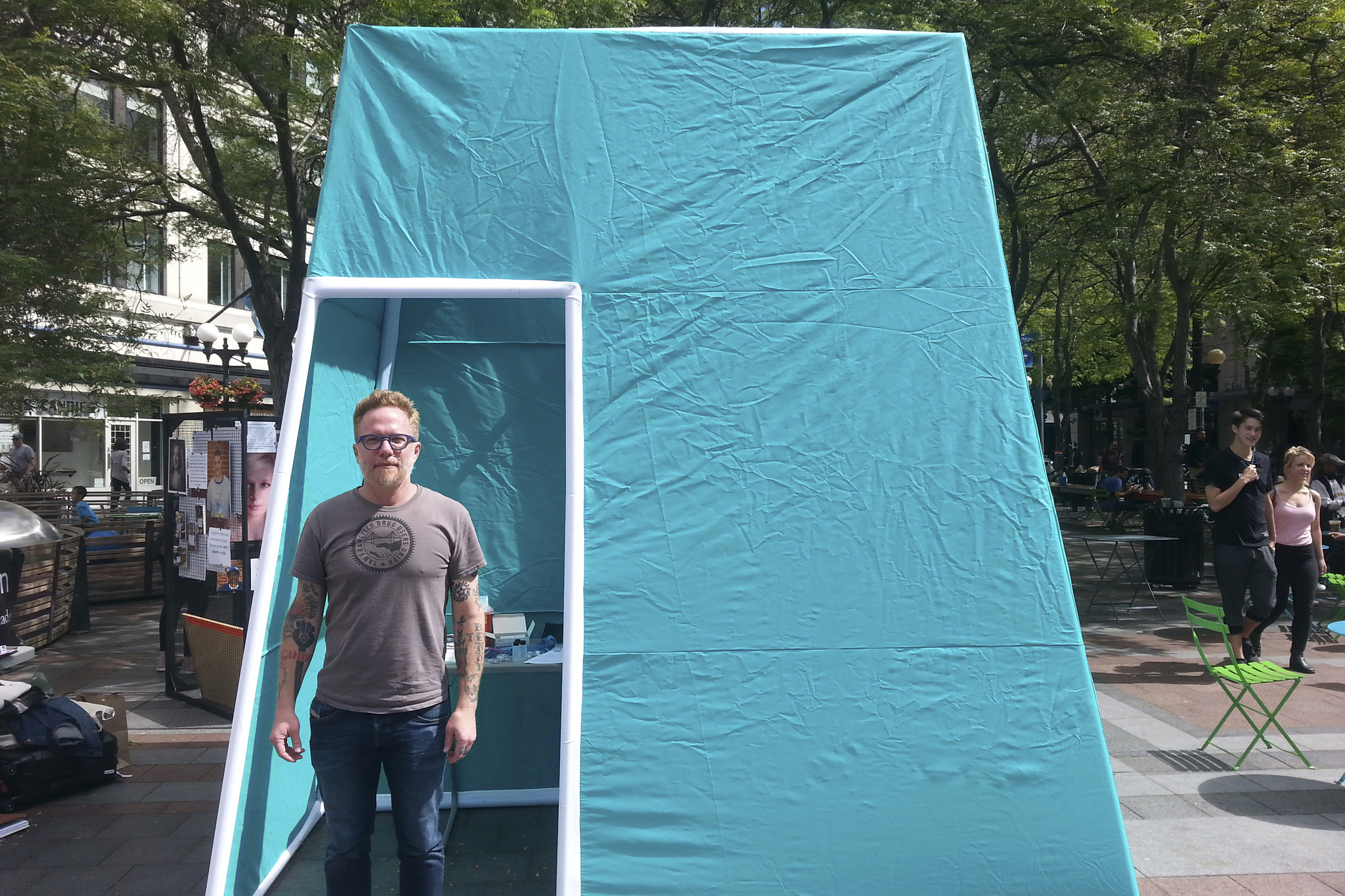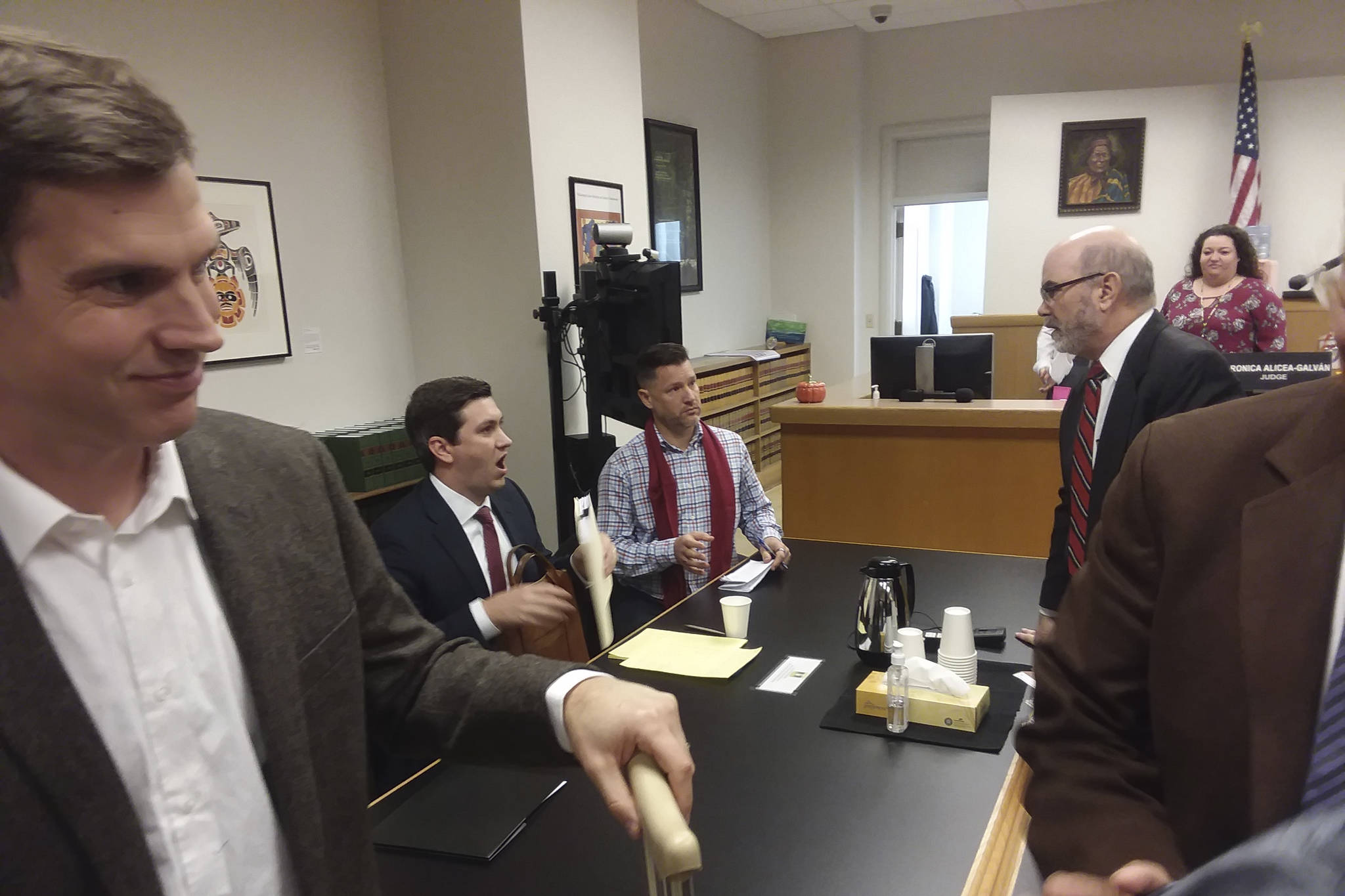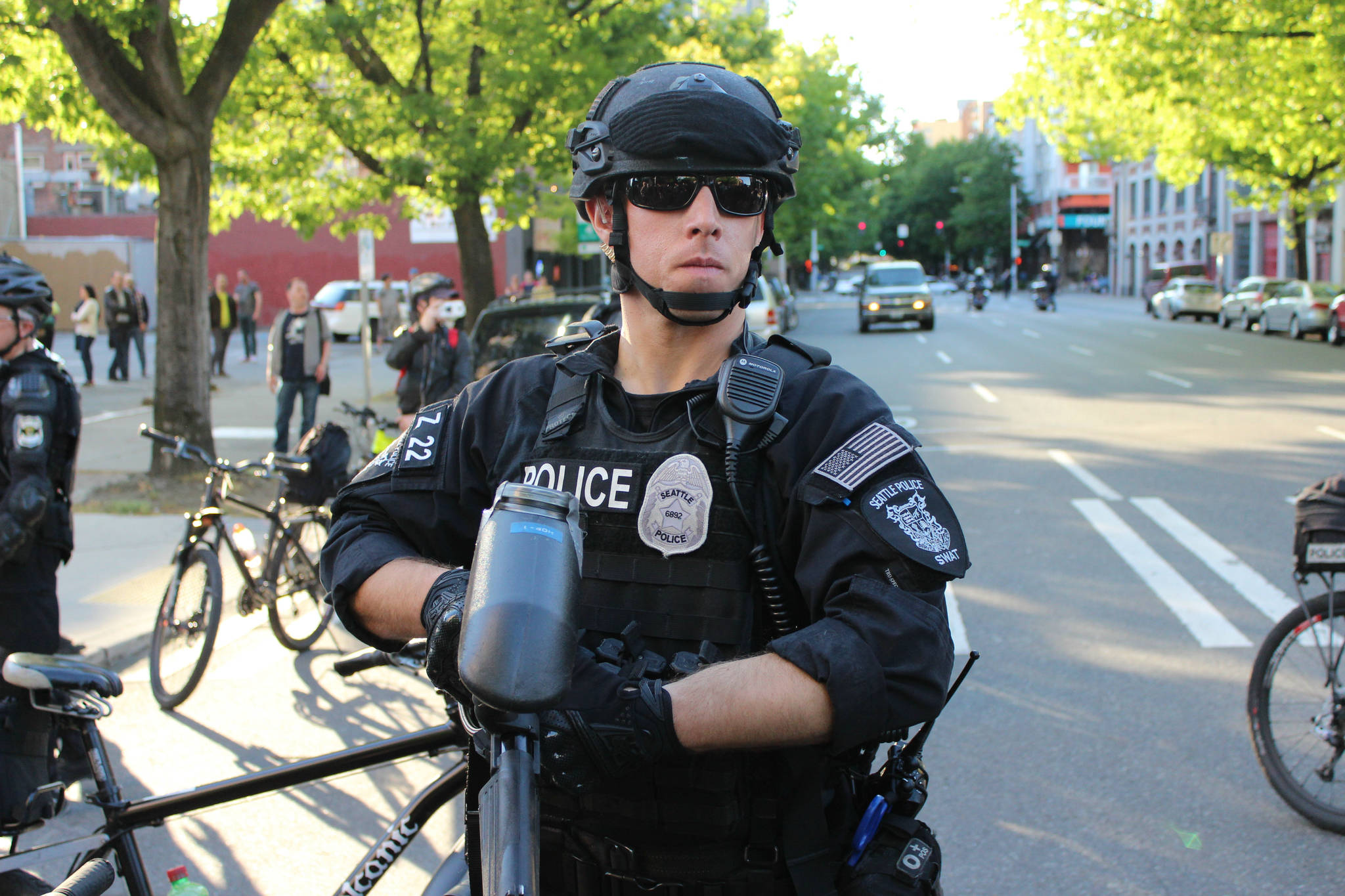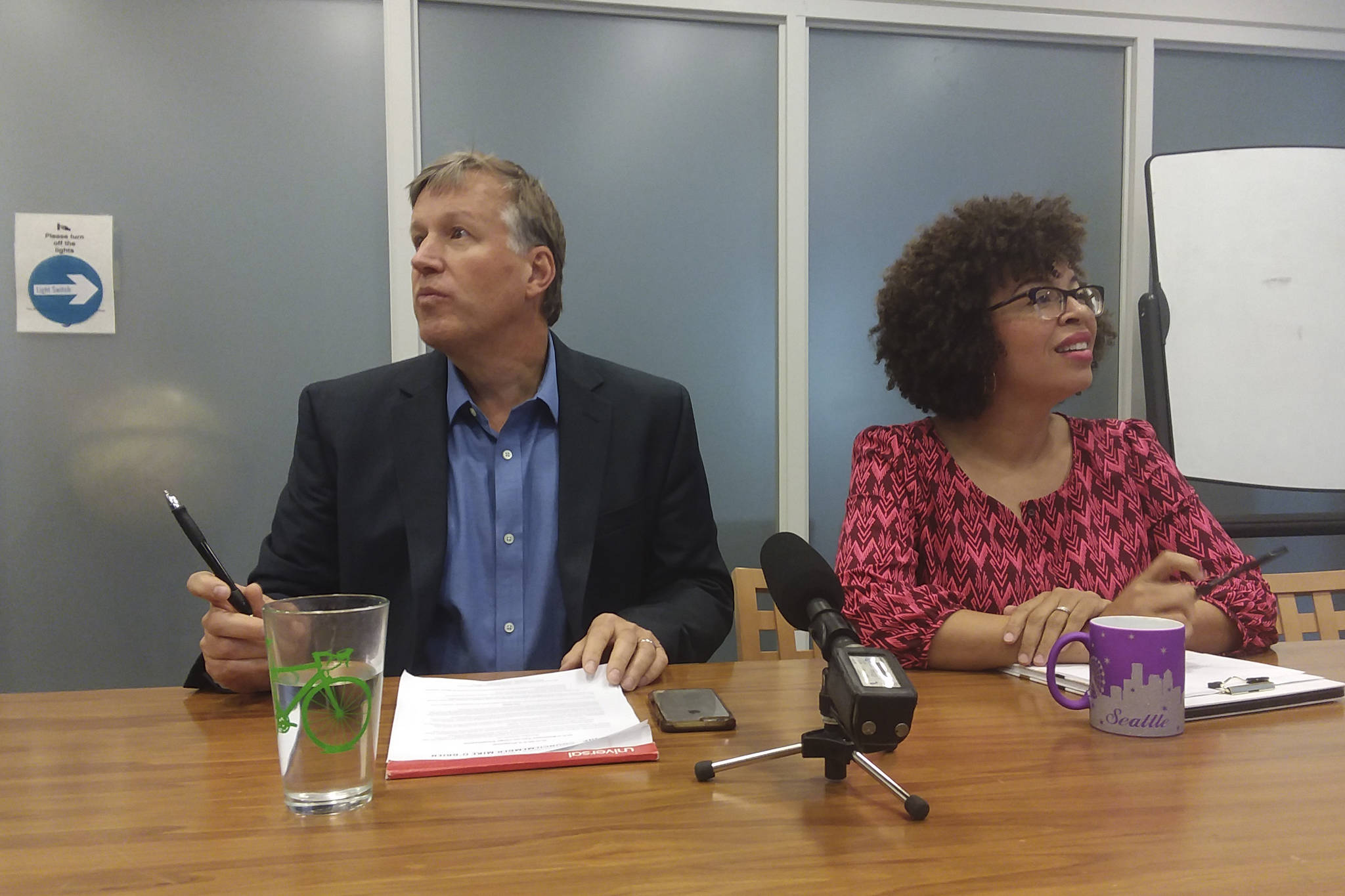Clad in blue jeans and a t-shirt, Greg Scott looks like he belongs on a billboard or the side of a bus, advertising Portland tourism. His arms are sleeved in tattoos. His eyeglasses are retro and purple. His beard is short and red.
But he’s from Chicago—DePaul University, to be exact, where the sociologist directs the Social Science Research Center. He says he’s been doing drug-related harm reduction research there for the past 15 years or so.
For the past week, though, Scott’s been in Seattle, showing people his tent.
It’s a bluish-green pyramid with the top cut off. A skeleton of white struts holds the structure together. There are two doorways on opposite sides, and a large window on a third side. This is Scott’s pop-up safe drug site—or as he calls it, “supervised consumption space.”
“It’s a fully functional site,” he says of the tent Thursday at Westlake Park. “We have actually used it for drug consumption in Chicago,” he says. But here in Seattle, it’s just for show, at least for now. Local drug policy advocates have been pushing hard for a safe drug site. Scott and his tent are here as part of their campaign, to help show the public exactly what such a site could look like.
The tent has three parts. Inside the entrance is a table with supplies for injecting drugs: syringes, arm ties, swabs and little metal cups called “cookers” for heating and mixing drug solutions before injection. (According to the BC Centre for Disease Control, cookers are more commonly shared between injection drug users than needles, thus increasing risk of disease transmission.) There’s literature about safer drug use practices and how to get services, and a sharps disposal box.
Turn right and walk two feet. This is the consumption station. It’s nothing fancy: just a white folding chair next to another small table with another sharps box. Users use here, supervised by medical staff who can intervene in case of overdose. The only legal safe drug site in North America, InSite, has had thousands of overdoses but no deaths since it opened in 2003.
When they’re done, users proceed to the final section of the tent, a tiny lounge with inflatable cushion seats. This is where I interview Scott. “This is the chill room,” he says, “where you can just kind of relax and experience the effects of the drug. You can be monitored for overdose…[and] access drug treatment” or other services. It’s an area, he says, where “you can relax and not be pressured, bullied, or victimized.”
That all sounds lovely and kumbaya, but shouldn’t illicit drug users be pressured or even bullied into sobriety? Doesn’t a space like this just enable addicts?
“Without a pulse, no change is possible,” he answers simply. “We’re enabling a safer kind of use.”
Scott points out that there are already very strong incentives against illicit drug use, like prison. And yet people still use. “People will do it no matter what. They will do it between parked cars, in vacant buildings. In very, very dangerous situations, they will use those substances, and there’s no changing that.” The idea of a safe drug site, he says, is to meet people where they already are, and then help—help, not push—them to incrementally become more stable and healthy.
“If your position is, ‘Those are drug users, they’ve brought this on themselves, we shouldn’t help them, we shouldn’t enable them with a facility like this’—OK, then what?” Scott says. “What follows there? Should they die? Are the wages of sin death?
“If you want them to die in the street, then just don’t do anything and don’t support something like this,” Scott says. “Don’t support syringe exchange access, don’t support safe consumption spaces. [But] if you want them to recover, to be ‘clean and sober’ or however you put it, then you need to realize that they need to have a pulse in order for that to happen. They need to be alive. And [safe drug sites are] the kind of thing that keeps people alive.”
One question for anyone who wants to open a safe drug site is, Smoking or non-smoking? There’s a trade-off. Allowing people to smoke drugs inside a site means the site needs ventilation, which can cost money. But smoking is (relatively) good, from a harm reduction standpoint. “It’s much safer to use methamphetamine by inhalation than it is by injecting, when you think about the risk of disease transmission,” Scott says. “One common strategy in harm reduction is to help people move down levels, like frequency of use, timing, amount, dosages—but also modality of ingestion. Getting people to move from injection to smoking, whether it’s meth or heroin or even cocaine, is a good thing.”
Scott calls sites that allow both smoking and injection “the Cadillac version”—ideal but not always practical. “Every community should figure out what it can do,” he says. “If it can do both, then I think that’s the preference.”
Today is the last day of Scott and his tent’s whirlwind tour of Seattle. Tonight, they’ll be at 12 Ave. Arts for a film screening and panel on safe drug sites and harm reduction policies, from 6-9 p.m.








